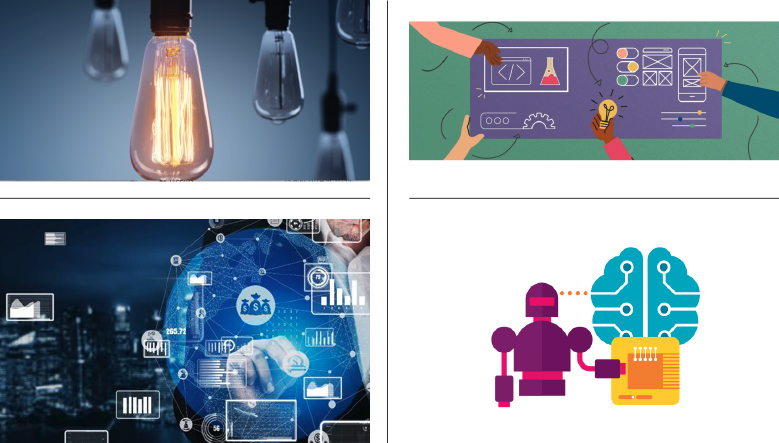Issue 11 – Winter 2025

News and Views on branding tech and innovation by law firms
Welcome to the 11th edition of Brandtech
Since our inaugural issue in summer 2019 the role of communications in fostering a culture of innovation has remained crucial. However, when it comes to brands and branding, much has evolved. We’ve seen brands come and go—BCLP Cubed, for example, arrived and then disappeared. Meanwhile, notable new standalone brands such as Konexo, Kennedys IQ and Eltemate have emerged. Yet, despite the rapid evolution of technology, the pace of branding in the legal sector seems to lag behind.
From our review of Top 100 UK Law firms we found,15 of the UK’s Top 50 law firms (30%) currently fail to reference their innovation and technology capabilities on their websites—an even higher percentage among firms ranked 51–100. While most undoubtedly have strong capabilities, their lack of visibility creates the wrong perception. If this communication gap extends internally, it can lead to significant challenges, especially with the rise of AI-powered legal tech products.
Effective communication plays a crucial role in fostering an innovative mindset and guiding clients through the journey. Cultivating this mindset begins with defining the firm’s positioning, vision, and approach to technology and innovation. This process not only sparks internal discussions but also aligns key stakeholders.
While deliverables like website content, RFPs, and presentations are key outcomes, the most profound impact comes from internal engagement. Providing teams with the content, tools, and education for meaningful conversations on how technology and innovation can address clients’ most pressing legal and commercial challenges. The approach not only helps strengthen existing relationships but creates new opportunities too.
Surely, there’s truly no better reason to enhance how firms brand their capabilities and initiatives!
Grahame Jones
News
New brands and refreshed ones.
During 2024, firms have been busy introducing new brands and revitalising others to help strengthen their positioning. Here are a few examples.

Jylo – Tech Capabilities: In-House or spin-off?
Developing AI and tech solutions is costly and often clashes with traditional law firm culture, yet it’s crucial for staying competitive. Following the lead of Hogan Lovells (Eltemate) and Reed Smith (Gravity Stack), Travers Smith has launched Jylo—a standalone, tech-first brand operating independently from the firm.
This approach allows for external sales, talent attraction, and operational flexibility beyond the constraints of an LLP. While the spin-off may not benefit directly from the parent firm’s brand equity, it gains the agility and scalability needed to grow as an independent business, while still offering expertise back to the firm’s clients.
It’s hard to imagine others not following suit —incubating innovation internally before spinning it off. After all, lawyers and tech professionals aren’t always the most natural pairing.

‘Next Gen Law Firm’ – says Herbert Smith Freehills
Herbert Smith Freehills, positioning itself as the ‘Next Gen Law Firm,’ has launched its global Digital Legal Delivery practice—a multidisciplinary group that brings together its most innovative legal and tech minds. “This new practice will allow us to rethink how we deliver core services to clients,” the firm states.
Notably, the group is structured as a service line rather than a standalone specialist unit or solutions provider. This raises an important question for law firms: Should emerging technology and legal operations be embedded into service line(s) to reflect what clients would expect from a sophisticated, commercial savvy law firm? Or should they be clearly separated to showcase a distinct response to evolving client needs? No right or wrong answer to this. Depends on how firms want to be seen. What is clear, however, and this is important for all firms regardless of their approach to positioning, is that internally, there is a single, identifiable group responsible for driving innovation and delivering creative legal and commercial solutions. This provides a clear focal point, making it easier to foster engagement and alignment across the firm.

Through the eyes of a Mantis Shrimp!
Seeing the bigger picture is a challenge for anyone tackling problems, especially highly complex ones. WBD Advance, Womble Bond Dickinson’s service line dedicated to innovation and technology, introduced a bold and fresh perspective on the concept of ‘seeing from every angle.’ As part of its brand-building campaign—one that’s already refreshing in its own right, considering how few firms invest in advertising, and even fewer choose high-profile platforms like The Telegraph, The Times and The Economist—WBD Advance took an eye-catching bold approach. They featured a close-up of the Mantis shrimp, a creature with one of the most impressive eyes in the entire animal kingdom. Who knew that it can see things beyond our own capabilities? Clearly, the team at WBD Advance must have special powers! This striking visual approach delivers a punch, standing out from those using the usual clichés for innovation and technology.

Freeths goes digital
How to label innovation without using the word itself? Some prefer a straightforward, descriptive approach, while others believe the term has become overused and diluted. Freeths opted for ‘Digital Law’ —the reasoning isn’t entirely clear, but given that innovation and transformation often stem from integrating digital capabilities into a business, the choice makes sense.

Lewis Silkin is ‘active’
Similar to Freeths, Lewis Silkin recently considered how to define its capabilities. Rather than opting for a passive phrase, the firm boldly adopted ‘Harness innovation and technology,’ signalling an active approach to leveraging innovation and technology to meet its goals. The firm has also taken a proactive stance in visualizing its capabilities. As our article ‘Visualising innovation: What do you see?’ highlights, many firms fall back on clichés, but Lewis Silkin has gone the extra mile by incorporating distinctive visual elements to reinforce its image as a forward-thinking, tech-savvy firm.

Outpace powered by Taylor Wessing
One of the few major firms not showcasing its innovation and technology story on its website, Taylor Wessing has launched Outpace—a digital platform designed for start-up founders. Endorsed and powered by Taylor Wessing, Outpace offers a centralised hub of knowledge and insights to help start-ups thrive beyond the seed stage and, as the name suggests, surpass market expectations.

Round-up: from around the firms
Over the past year, several other firms have refined and developed their brands. Law& (DLA) spun off its tokenization platform, TOKO, into an independent brand called Scintilla. It also streamlined its portfolio structure, making it clearer how the firm delivers its legal, technology, and business solutions.
In contrast, Osborne Clarke and Simmons & Simmons have taken different approaches to their structures, neither of which makes it particularly easy to understand how their solutions work. However, Simmons & Simmons has done a better job with its visual identity, introducing a set of colourful, futuristic energy-wave images that give its solutions a high-tech, digital aesthetic. Others however are still using standard generic images.
Gravity Stack (Reed Smith) refreshed its brand identity, while Hogan Lovells reinforced its digital-first strategy by amplifying the presence of its signature lime green. NRF had a busy year raising awareness of its legal operations services through thought leadership.
Positioned as a service line, Trowers Hamlin joined the ranks of firms labelling its capabilities by launching TrowersEvolve, “a portfolio of practical legal technology-based solutions for clients,” as the firm claims. Name works perfectly to underline the firm’s approach to continuous improvement and adaptation when supporting clients’ evolving challenges.
Meanwhile, Mishcon de Reya, never one to remain quiet, acquired legal resourcing provider Flex Legal. By retaining its name and identity, Flex Legal remains free to support other law firms while benefiting from its new ownership. Freshfields, alongside its new corporate identity, now promotes ‘Smarter Delivery,’ while A&O Shearman has dropped ‘Advanced Delivery’ in favour of ‘Legal Innovation.’ That now leaves Ashurst (Ashurst Advance) and Womble Bond Dickinson (WD Advance) to battle it out for the title of who is truly the most advanced! When it comes to language, it’s no surprise that terms like Artificial Intelligence (AI) are appearing everywhere, signalling both commitment and reassurance. There’s no doubt, this trend is set to continue!

Features
Why law firms need to pay attention to in-house innovators
How their narrative for innovation and AI can help.
The FT Innovative Lawyers awards have been a cornerstone event in the legal innovation calendar since 2006. Created by RGSI, the global intelligence and advisory agency for the legal sector, Toby Weston, one of the firm’s researchers, offers insights from his interviews with over 100 in-house teams for the 2024 FT Innovative Lawyers reports.’ In this piece, he explores emerging trends within in-house teams and their influence on law firms, as well as how these trends shape client communications.
A good in-house legal team helps a business drive safely. A great one also helps set the route. So much is clear from the 100 or so interviews I’ve carried out with general counsels and their colleagues over the past year.
They shared their perspectives as part of the research programme for Financial Times Innovative Lawyers – a series of annual special reports and live events highlighting emerging trends in the legal industry. RSGI carries out the research for the FT reports and in the course of every year investigates over 300 unique teams, interviewing GCs and c-suite colleagues alike.
What has struck me has been both legal leaders’ willingness to share their experiences with their peers in other companies, and the extent to which the most advanced teams are pursuing innovation on multiple fronts: not just technology, but also talent, operations and purchasing. The aim, as the head of legal at a leading telco put it, is to “support the business and drive revenue growth”.
In-house teams are less and less willing to pay external lawyers for tasks that AI can do
This has big implications for law firms, especially given the current backdrop of disruptive technology – above all artificial intelligence – and geopolitical shifts, both of which are complicating the regulatory landscape. Clients still need traditional legal advice, but increasingly they also support in achieving their strategic objectives.
At the same time, in-house teams are less and less willing to pay external lawyers for tasks that AI can do. A key theme emerging from RSGI’s research is the growing consensus among in-house teams that they should use AI to bring more work in-house.
Low-risk, high-volume contracts are prime candidates for this approach.
A striking example, cited in the most recent FT Innovative Lawyers survey of Europe, was a collaboration between Dutch health tech company Phillips and chipmaker ASML, whose legal teams together drafted in full a non-disclosure agreement during a hackathon. As the lawyers negotiated, the technology delivered customised clauses.
Companies are already seeing efficiency gains from generative AI. Spanish energy group Repsol reports that using an AI tool for legal tasks such as contract review is saving three hours per lawyer per week. The technology can also lighten the administrative workload: consumer goods giant Unilever says AI tools are cutting the time each of its lawyers devotes to admin by 30-60 minutes a day.
It is only natural for general counsels to expect the law firms whose services they pay for to seek similar AI-driven efficiencies. They would also like their firms to develop pricing models that reflect these efficiencies – such as moving away from high hourly billing rates for tasks that can now be automated.
The good news, of course, is that firms are indeed embracing these tools. Of the 44 surveyed for FT Innovative Lawyers North America in the second half of last year, 36 were already using generative AI. Only nine, however, were using it for live client matters. In part this is due to familiar concerns about data privacy and other ethical considerations, though a frequently overlooked factor is the high cost of licensing these tools. That makes it hard for law firms to reflect the benefits they deliver in their current pricing models – to which the obvious client response, as just noted, is to call for new pricing models.
In-house teams would like their external lawyers to share their AI knowhow
A key point emerging from my interviews is that in-house teams would like their external lawyers to share their AI knowhow. Big firms in particular command substantial resources and are well positioned both to experiment with legal technology and to support their clients in adopting AI. If that means getting less work in the short term, the potential long-term gains from thought leadership and stronger client relations may more than compensate.
Currently, many in-house teams find it more beneficial to collaborate with each other than with their law firms on AI strategy. Law firms, in other words, are missing a trick: they may find it pays to engage more fully with their clients’ innovation narratives even as they shape their own.

Review of Top 100 UK law firms
Recently revisited the Top 100 firms (source: UK200 report, The Lawyer, 2023) to see how firms are positioning innovation and technology.
Top 50 firms:
Although there has been progress—from 20 firms (40%) in 2023 not promoting their innovation and technology capabilities on their websites to 15 firms (30%) in 2025—major players like Taylor Wessing, Withers, Irwin Mitchell, HFW, WFW, and Charles Russell Speechlys are still missing the opportunity to share their stories.
Firms Ranked 51-100:
Among the next tier of firms, only 10 out of 49 firms (20%) mention innovation and technology, including Burness Paul, Cripps, Gunnercooke, Lewis Silkin, Shepherd & Wedderburn, Wedlake Bell, and VWV. The majority, however, remain silent. Similar to when we reviewed firms’ revenues of below £100m.
One thing is clear, regardless of where firms rank: clients want to understand how firms are driving efficiency and delivering value for money. As AI continues to reshape the legal landscape, firms will face increasing pressure to articulate their approach—not only to stay competitive but also to meet evolving client expectations.
Some firms however are doing a good job in branding their business of law. We reviewed the top performers in Issue 10. We reviewed the top performers in Issue 10.

Naming AI products: Developing a cohesive approach
The AI Gold Rush is in full swing and law brands of all stripes are rushing to establish their particular AI-driven generative tools to enhance their legal services. Either produced in-house or via partnerships, they often requires some kind of adjacent brand, which, of course, then needs a name. This, in turn, presents branding challenges for firms.
Several brands have simply taken to adding ‘AI’ (or ‘.AI’) to the beginning or end of their names. Think FleetAI, (Dentons), ButterflAI (DLA Piper), AGPT AI (Addleshaw Goddard) and AI Comply (Shoosmiths).
Others refrain from using the ‘AI’ suffix: Analyse (Travers Smith), LUCY (Clifford Chance), Percy (Simmons & Simmons) and TWLitium (Taylor Wessing).
The examples above highlight two distinct branding approaches. Names like Fleet and Navigator evoke agility, intelligence, and guidance, reinforcing a firm’s forward-thinking positioning. At the same time, law is a profession built on trust. Names like Percy, LUCY, and, of course, Harvey, humanize AI, making it feel like a reliable assistant rather than an impersonal algorithm.
Regardless of the approach firms take, naming AI-driven generative tools highlights a broader challenge—naming and branding legal tech products, solutions, and services. Names are often created at practice, sector, or country levels without considering how they fit into the firm’s overall brand strategy. This can result in a patchwork of names ranging from technical to abstract, descriptive to acronym-based.
Such inconsistency can lead to internal confusion, hindering partners’ ability to engage with and adopt technology to address client challenges effectively. Without a cohesive naming system as part of a broader brand architecture strategy this issue will persist—especially as the proliferation of AI-powered products continues to grow.

Auxiliary services: Part of innovation?
As most CMOs will attest, differentiation in core legal services alone is challenging. However, auxiliary services present a unique opportunity to create distinction. These range from complementary solutions—such as HR support, strategy, secondments, training, and leadership development—to fixed-price, lower-value offerings like legal document templates, 30-minute consultations, and legal apps.
While these services clearly demonstrate a firm’s ability to address clients’ evolving legal and commercial challenges, the question remains: should they be classified as innovation? The answer largely depends on how firms define innovation itself. If innovation is seen as a problem-solving process, then auxiliary services can indeed be part of how firms bundle technology, people, and processes. However, many of these services are low- or no-tech and may not align naturally with more advanced, tech-enabled solutions that enhance firms’ technology and data capabilities.
However, these solutions clearly reflect firms’ commitment to supporting clients while strengthening their value proposition. Many are relatively easy to implement, often requiring little to no technology, and serve to highlight innovation beyond tech-driven solutions –demonstrating solutions-based culture.
There’s no single right way to position auxiliary services. However, in the absence of advanced technology, they offer a compelling way for firms to showcase new approaches to delivering value and enhancing the client experience.

Visualising innovation: What do you see?
Close your eyes for a moment and think ‘innovation’. What images come to mind? A light bulb representing ideas, creativity, and problem-solving? People working on white boards to express problem solving, and collaboration? Gears and cogs reflecting systems, processes, and engineering solutions? Or perhaps circuit boards, microchips or robots representing digital transformation and AI? While these visuals may come to mind, most are clichés—and this can be a problem, especially for sophisticated law firms positioning themselves as modern and forward-thinking.
Cliché images like light bulbs and circuit boards can give the impression that the firm is not embracing change or is stuck in outdated practices, undermining efforts to project a progressive image. Moreover, these visuals are often misaligned with core brand values like trust and quality and fail to reinforce a law firm’s reputation for premium legal expertise. This often stretches beyond choice of images and how firms embrace creativity to showcase an inventive mindset. Read our article, ‘Branding technology and innovation: too beige‘.
Despite these drawbacks, some firms continue to use these generic symbols. Below, we showcase a selection of clichéd images found on law firms’ websites under their ‘Innovation’ section.

As featured both Lewis Silkin and WBD Advance avoided relying on clichés, demonstrating their innovative thinking and creativity through the choice of imagery. Another example is Shoosmiths. The firm uses bespoke abstract black and white imagery and subtle micro animations to elegantly convey themes of innovation, modernity and digital transformation.

If you’re unable to find the right visuals, consider avoiding images altogether. Instead, focus on typography, colour, and, most importantly, content to reinforce your firm’s progressive and modern approach.
About
We are a boutique branding and design agency specialising in the legal sector. For over 25 years, we have partnered with leading law firms to craft and implement creative branding solutions to help set them apart. Increasingly our focus is helping firms brand their business of law capabilities —an area of growing importance for firms. We have helped firms define, position, and communicate their innovation and technology capabilities, ensuring their brand truly reflects the full scope of their expertise and forward-thinking approach.
Review our credentials.
Further information, contact Grahame@soukiasjones.co.uk.


